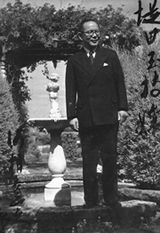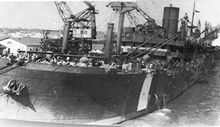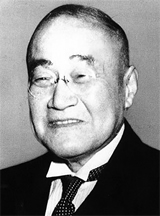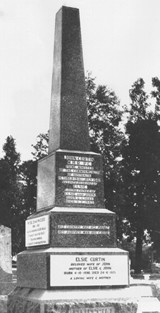
A moderating Australian influence
When war broke out in the early morning of 8 December 1941, Tatsuo Kawai and his diplomatic and consular staff were placed under a loose form of house arrest at Kawai's Carn Brea residence in Melbourne. Minister Evatt allowed the internees access to books, magazines and newspapers as well as allowing visits to the city. The Japanese under Kawai continued to gather intelligence on Australia of use to Japan as they had before the war.
Kawai's friend and commercial secretary in Australia, Taijiro Ichikawa, admitted in 2002 that during house arrest in Melbourne, Kawai and his staff prepared a general report about Australia and 'submitted it to a certain collaborator', finishing it later after returning to Japan. 43
There is evidence to suggest that despite his continuing loyalty to Japan, Kawai's initial strident militant thinking had moderated under Curtin's influence. Kawai and his staff eventually were repatriated to Japan in a diplomatic exchange. Just prior to his departure from Port Melbourne on the City of Canterbury on 16 August 1942, Tatsuo Kawai made an extraordinarily conciliatory statement to foreign newspaper reporters who were interviewing him. His regretful words were starkly different to the shrill declarations then emanating from Tokyo:
'I have failed in my mission and am returning to Japan a bitterly disappointed man. I came to Australia in high hope of creating better understanding, even though war clouds were already gathering in the Pacific. I realised that there were vital matters in dispute, but always hoped that our two countries would find some way of preserving peace.
'The outbreak of war was the greatest blow I have ever received in my life. Those Australians who know how I struggled to avert war in the Pacific will understand when I say my spirit has been broken. When peace comes, the white man and the Asiatic must go hand in hand with each other in the Pacific.' 44

Tatsuo Kawai at Carn Brea,
Melbourne. Ca. 1941 - 1942.
Photograph from the Kawai family collection at Manazuru.
JCPML01224/72.

City of Canterbury preparing to leave
Port Melbourne with Tatsuo Kawai
on board along with other Japanese citizens on diplomat exchange
program, 1942.
Photograph from the Kawai family collection at Manazuru.
JCPML01224/103.
Kawai portrayed as a pacifist
During Kawai's eight months of house arrest at Carn Brea, the diplomat had become friendly with the officer in charge of his guard, Captain Philip Proctor. The two men enjoyed long discussions over games of chess. Proctor was at dockside when Kawai gave his press interview.
As Kawai sailed away to Japan via East Africa, Proctor wrote to his superiors in the Commonwealth Security Service:
'His Excellency Mr Kawai expressed himself as being most disappointed at the turn of events ... having failed to bring about those better relationships, which he had hoped to achieve whilst in Australia.
'I am of the opinion that he, personally, is genuine in the expression of this sentiment, but that it is probably on the ground that he is by nature a Pacifist.' 45
Kawai took back to Japan with him intelligence on Australia and the ashes of four of the six submariners killed in the Japanese midget submarine raid on Sydney Harbour in May 1942. His passionate words about the bravery of the young submariners, reported widely in Japan, did nothing to secure his ongoing diplomatic career after his outspokenness on leaving Australia. Out of favour, Kawai lunched with Emperor Hirohito at the Imperial Palace on 18 March 1943 and resigned the same day.
During the war Kawai alternated between his house in Tokyo and his beautiful coastal retreat at Manazuru which overlooked the sea and the Izu peninsula. There, Kawai lived frugally, toiling to grow tangerines on the slopes of his small acreage.
There is evidence that towards the end of the war he privately worked for peace and in April 1945 was despatched secretly to China in an effort to negotiate a peace.
He was also in frequent clandestine peace talks with liberal friend, neighbour and former diplomat Shigeru Yoshida, who had been jailed by the militants. 46
Death of Prime Minister Curtin
Prime Minister John Curtin died at The Lodge in Canberra on 5 July 1945, some six weeks before the surrender of Japan.

